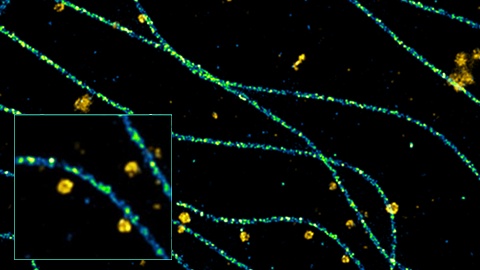During this webinar, Nicolas will show you how fast and easy it can be to obtain high-quality, reliable, and understandable single-molecule images of your samples with 15 nm resolution in 3D. He will go through the entire imaging workflow—from sample preparation to data analysis—to show you what the single-molecule local microscopy (SMLM) community has made possible, what the common mistakes are, and how Abbelight’s tools and support can make the imaging and analysis journey much easier.
FAQWebinar FAQs | Imaging multiple subcellular structures at the nanometer scaleHow long does it take to acquire 3D multicolor nanoscopy images?The spectral demixing strategy means that acquisition of three-color images typically takes less than one minute for a standard field of view in 3D (about 50 × 50 µm), and a few minutes for larger fields of view (150 × 150 µm). How difficult is it to prepare nanoscopy structures?Sample preparation requires only simple modification of the standard preparation procedure, such as changing the concentration of the fixative (e.g., PFA) or increasing the antibody concentration. It only requires fine tuning of your own protocol. The Abbelight team can provide guidance for this if necessary. How do you deal with chromatic aberrations in multi-color experiments and with sample drifts?The spectral demixing strategy allows simultaneous imaging of 2 to 3 far-red channels like 647 nm, 660 nm, and 680 nm. Since the 3 colors are very close in wavelength, there is no chromatic aberrations with this technique. Sample drifts are always calculated and applied on the image in real time during the acquisition, and they can be refined with different published algorithms and methods in post-acquisition processing. What is the importance of nanoscopy in diagnosing diseases such as Parkinson’s, Alzheimer’s, and viral infection?The power of SMLM nanoscopy relies on the fact that the output of an acquisition is not only an image, but a text file with the X,Y, and Z position of every molecule detected during the acquisition. This enables:
This potential is currently used to help diagnose diseases, develop novel therapies, diagnose viral or bacterial infection, and much more. |

